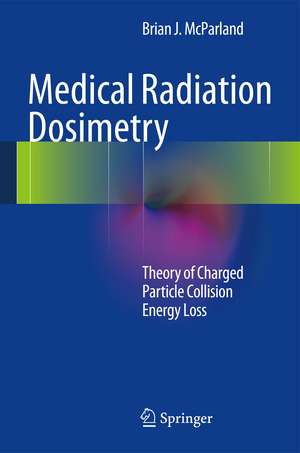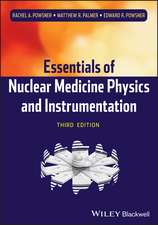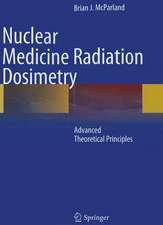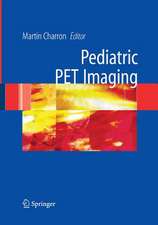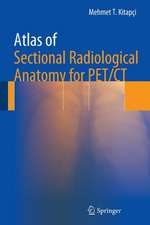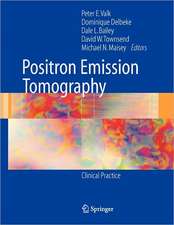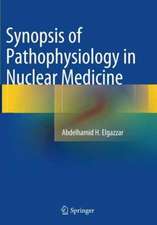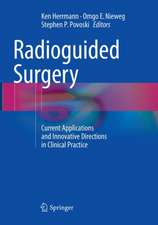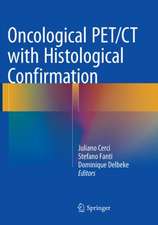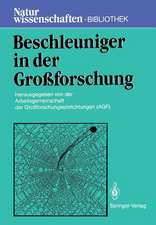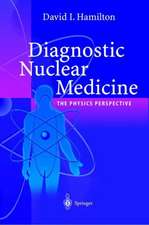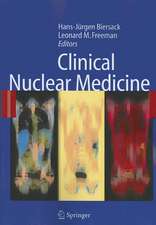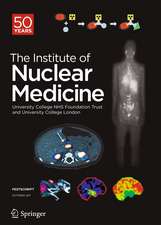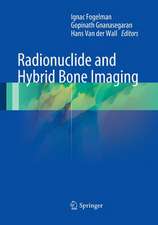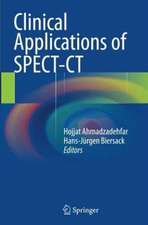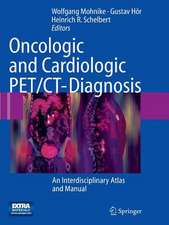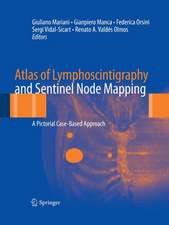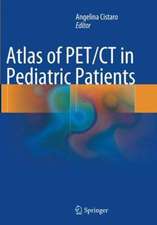Medical Radiation Dosimetry: Theory of Charged Particle Collision Energy Loss
Autor Brian J McParlanden Limba Engleză Hardback – 29 noi 2013
Each year, about one-third of the world's population is exposed to ionising radiation as a consequence of diagnostic or therapeutic medical practice. The optimisation of the resulting radiation absorbed dose received by the patient and the clinical outcome sought, whether diagnostic or therapeutic, demands accuracy in the evaluation of the radiation absorbed doses resulting from such exposures. This requirement arrises primarily from two broadly-encompassing factors:
- The requirement in radiation oncology for a 5% or less uncertainty in the calculation and measurement of absorbed dose so as to optimise the therapeutic ratio of the probabilities of tumour control and normal tissue complications; and
- The establishment and further refinement of dose reference levels used in diagnostic radiology and nuclear medicine to minimise the amount of absorbed dose for a required degree of diagnostic benefit.
The theoretical development of charged particle energy loss recognised in medical physics textbooks is in general limited to basic derivations based upon classical theory, generally a simplified form of the Bohr theory. More advanced descriptions of, for example, the Bethe-Bloch quantum result usually do not go beyond the simple presentation of the result without full explanation of the theoretical development of the theory and consideration of its limitations, its dependencies upon the Born perturbation theory and the various correction factors needed to correct for the failures of that Born theory at higher orders. This is not appropriate for a full understanding of the theory that its importance deserves. The medical radiation physicist should be aware of the details of the theoretical derivations of charged particle energy loss in order to appreciate the levels of accuracy in tabular data provided in reports and the calculation methodologies used in modern Monte Carlo calculations of radiation dosimetry.
| Toate formatele și edițiile | Preț | Express |
|---|---|---|
| Paperback (1) | 1429.64 lei 43-57 zile | |
| SPRINGER LONDON – 23 aug 2016 | 1429.64 lei 43-57 zile | |
| Hardback (1) | 1637.90 lei 43-57 zile | |
| SPRINGER LONDON – 29 noi 2013 | 1637.90 lei 43-57 zile |
Preț: 1637.90 lei
Preț vechi: 1724.10 lei
-5% Nou
Puncte Express: 2457
Preț estimativ în valută:
313.51€ • 340.66$ • 263.52£
313.51€ • 340.66$ • 263.52£
Carte tipărită la comandă
Livrare economică 21 aprilie-05 mai
Preluare comenzi: 021 569.72.76
Specificații
ISBN-13: 9781447154020
ISBN-10: 1447154029
Pagini: 314
Ilustrații: XXXVI, 622 p. 126 illus., 5 illus. in color.
Dimensiuni: 155 x 235 x 32 mm
Greutate: 1.38 kg
Ediția:2014
Editura: SPRINGER LONDON
Colecția Springer
Locul publicării:London, United Kingdom
ISBN-10: 1447154029
Pagini: 314
Ilustrații: XXXVI, 622 p. 126 illus., 5 illus. in color.
Dimensiuni: 155 x 235 x 32 mm
Greutate: 1.38 kg
Ediția:2014
Editura: SPRINGER LONDON
Colecția Springer
Locul publicării:London, United Kingdom
Public țintă
Professional/practitionerCuprins
Part I. Introduction to Charged Particles.- 1. Introduction.- 2. Elements of Quantum Scattering Theory.- Part II. Elastic Coulomb Scatter.- 3. Introduction of Part II.- 4. Elastic Coulomb Scatter from an Unscreened Point Charge.- 5. Elastic Coulomb Scatter from Distributed and Screened Charges.- 6. Multiple Elastic Coulomb Scatter.- Part III. Collision Energy Loss.- 7. Introduction to Part III.- 8. Soft Collisions.- 9. Hard Collisions.- 10. Total and Restricted Collision Stopping Powers and Theory of the Mean Energy Expended to Create an Ion Pair.- 11. Mean Excitation Energy.- 12. Higher-Order Corrections in the Collision Stopping Power.- 13. Charged Particle Range.- 14. Collision Energy Loss in Compound Media.- Part IV. Stochastic Collision Energy Loss.- 15. Introduction to Part IV.- 16. Collision Statistics.- 17. The Chapman-Kolmogorov and Bothe-Landau Equations.- 18. Probability Distribution Functions for Collision Energy Loss.
Recenzii
From the book reviews:
“This is a detailed comprehensive discussion of quantum mechanics and particle physics related to radiation physics and therapy. … This book is of great value to radiation oncologists and physicists. I highly recommend it.” (Joseph J. Grenier, Amazon.com, October, 2014)
“This is a detailed comprehensive discussion of quantum mechanics and particle physics related to radiation physics and therapy. … This book is of great value to radiation oncologists and physicists. I highly recommend it.” (Joseph J. Grenier, Amazon.com, October, 2014)
Notă biografică
Brian J McParland, BASc MSc PhD CPhys CSci FCCPM FIPEM FInstP, is a Head of Medical Physics with an extensive research and clinical background in medical physics in senior hospital, university and commercial appointments. He is a recognised authority in the field of medical radiation dosimetry, having practised the discipline in radiation oncology, diagnostic radiology, nuclear medicine and radiation protection. Dr McParland is an elected Fellow of the Canadian College of Physicists in Medicine, the Institute of Physics and Engineering in Medicine, and the Institute of Physics, and is both a Certified Scientist and a Certified Physicist in the United Kingdom. Dr McParland is the author of the awarded companion text book, Nuclear Medicine Radiation Dosimetry: Advanced Theoretical Principles and of over 90 peer-reviewed publications in the medical and physics literature.
Textul de pe ultima copertă
Medical Radiation Dosimetry: Theory of Charged Particle Collision Energy Loss provides a uniquely required advanced, comprehensive and definitive theoretical description of the physics of charged particle collision energy loss and the role that it plays in the clinical radiation dosimetry resulting from exposure to ionising radiation.
Medical Radiation Dosimetry: Theory of Charged Particle Collision Energy Loss is both an advanced mathematical and physics treatise and an essential reference volume for the medical physics graduate student and the medical radiation physicist working in the field of clinical and research radiation dosimetry. It will assist both audiences in both the understanding of the genesis of the numerical data provided in multiple technical reports and publications, and of the limitations of these data.
Medical Radiation Dosimetry: Theory of Charged Particle Collision Energy Loss is both an advanced mathematical and physics treatise and an essential reference volume for the medical physics graduate student and the medical radiation physicist working in the field of clinical and research radiation dosimetry. It will assist both audiences in both the understanding of the genesis of the numerical data provided in multiple technical reports and publications, and of the limitations of these data.
Caracteristici
This book highlights and analyses the strengths, weaknesses and assumptions of the theoretical developments It acts as an adjunct to other resources which provide tabular forms of energy loss data but do not explore in any depth the theory leading to the calculation of these data The book congregates all of the advanced knowledge required in the development of the theory in its medical applications in a single and unmatched resource
